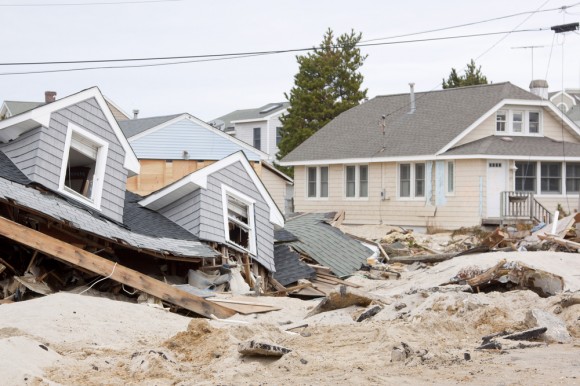Two new hurricane forecast models promise to help property owners and insurers better predict the losses from storms that may be increasing in intensity as ocean waters continue to warm.
The National Hurricane Center announced just ahead of the 2023 Atlantic hurricane season that it had improved its Probabilistic Storm Surge model to version 3.0, which will provide coastal surge predictions up to three days in advance. That’s an improvement over the two-day warning that officials had previously used.
“It’s a big upgrade,” NHC storm surge specialist, Cody Fritz, told National Public Radio last week.
The system, which combines wind and storm tracks with new data on vegetation in the storm’s path, also allows surge modeling for the first time for Puerto Rico and the U.S. Virgin Islands, which have been hard-hit by storms in recent years.
The changes don’t come a day too soon, officials said.
 “We are seeing a sharp increase in catastrophic storm surge impacts in our coastal communities,” Ken Graham, director of NOAA’s National Weather Service, said in a statement. “Our new capabilities to effectively and accurately model and forecast storm surge (are) critical to upholding the NWS mission of protection of life and property.”
“We are seeing a sharp increase in catastrophic storm surge impacts in our coastal communities,” Ken Graham, director of NOAA’s National Weather Service, said in a statement. “Our new capabilities to effectively and accurately model and forecast storm surge (are) critical to upholding the NWS mission of protection of life and property.”
More about the P-surge model can be seen here.
Also, Aon, the global data analytics firm, on Thursday unveiled a new computer model and forecasting system that allows insurers to better assess portfolio losses as soon as a hurricane’s landfall point becomes clear.
The Auto Event Response program combines NHC data with up to 10 academically reviewed models to produce real-time impacts on exposed properties, Aon Managing Director Daniel Hartung explained in a webinar.
 The system, which examines properties in a storm’s actual path, rather than basing losses on simulations or probabilistic forecasts, can produce a “quantifiable loss estimate at various granularities,” he said.
The system, which examines properties in a storm’s actual path, rather than basing losses on simulations or probabilistic forecasts, can produce a “quantifiable loss estimate at various granularities,” he said.
It also provides a better idea of the actual wind speeds as hurricanes move inland and decay, he said. A report will be delivered automatically via email to subscribers, within an hour of a forecast update.
A new version of Aon’s Impact Forecasting, an enhanced hurricane model, is now being reviewed by the Florida Hurricane Commission, Aon’s Will Skinner said.
Re-lated: Reinsurers Maintain Heightened Risk Aversion in June 1 Renewals, Report Finds
Topics Catastrophe Natural Disasters Profit Loss Windstorm Hurricane
Was this article valuable?
Here are more articles you may enjoy.



 Expense Ratio Analysis: AI, Remote Work Drive Better P/C Insurer Results
Expense Ratio Analysis: AI, Remote Work Drive Better P/C Insurer Results  Florida Lawmakers Ready for Another Shot at Litigation Funding Limits
Florida Lawmakers Ready for Another Shot at Litigation Funding Limits  Door of Swiss Bar Where 40 Died in Fire Was Locked, Says RTS
Door of Swiss Bar Where 40 Died in Fire Was Locked, Says RTS  MAPFRE Accuses AAA of Violating Long-Time Exclusive Marketing Agreement
MAPFRE Accuses AAA of Violating Long-Time Exclusive Marketing Agreement 

